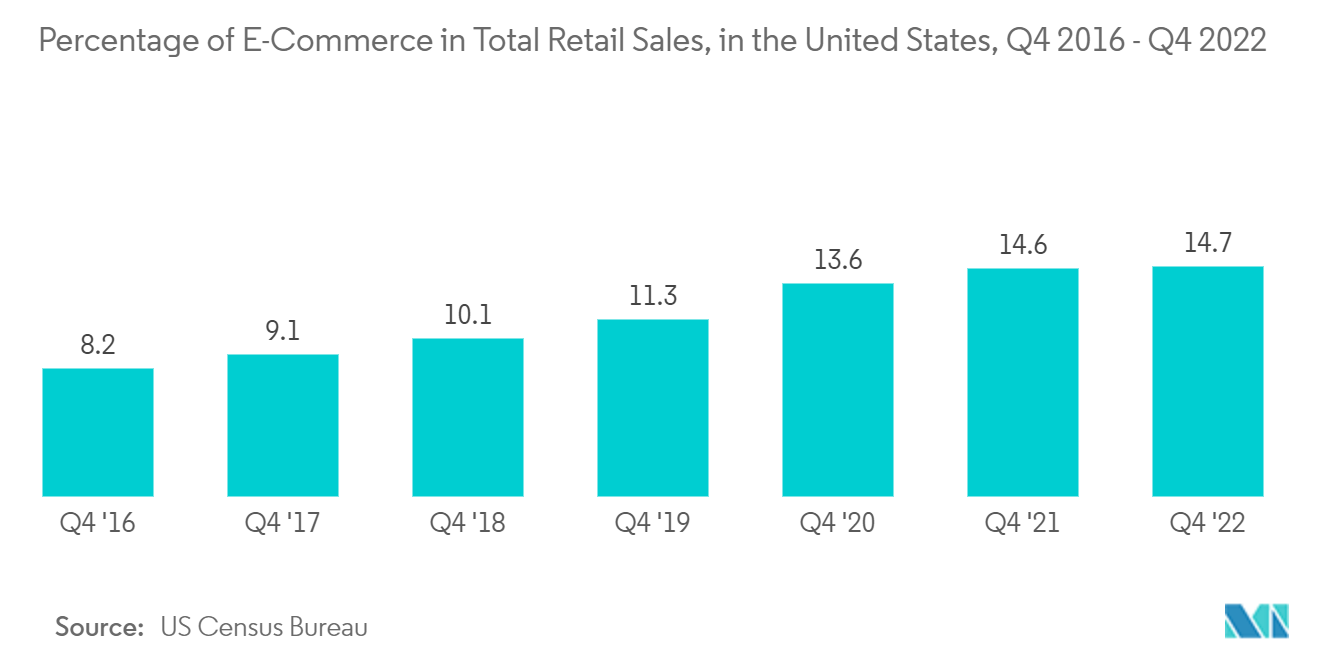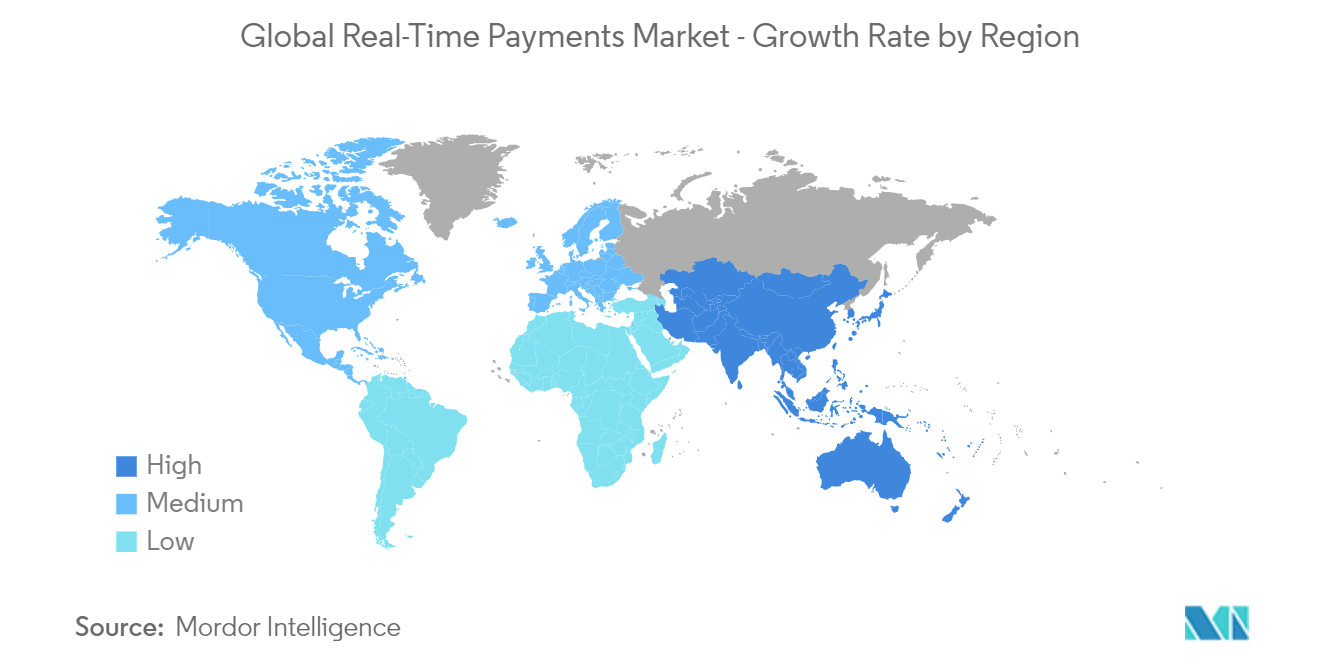Market Trends of Real-Time Payments Industry
P2B Segment Holds the Key to Drive the Market
- P2B payments refer to monetary transactions between (to or from) businesses and customers. The unabated growth of mobile-based transactions and e-commerce is a key factor driving the development of the segment.
- The continuous growth of online shopping and e-commerce sales is expected to drive the development of the segment. P2B payments allow businesses to improve customer satisfaction. The P2B structure has been picking up the pace with the change in regulatory reforms. Online and in-store bill payments promise the next wave of huge volumes needed to keep real-time costs cheaper than cards.
- Also, lower-cost P2B transactions offer a new level of cash management to businesses that can benefit from real-time liquidity owing to instant settlement along with the added level of service to the consumer related to the instant notification of the status of the transaction.
- In the gig economy, the labor markets are characterized temporarily. Examples of jobs that comprise the (just-in-time workforce) include food delivery services, ride-hailing services (such as Uber or Bolt), house sitters, and dog walkers. Real-time payments make it big and beneficial to gig economy workers because workers are paid quickly, allowing them to better plan their finances without worrying about cash-related transactions.
- The increasing trends for cloud-based real-time payment solutions can be attributed to their flexibility in providing real-time payment insights to retailers. The growing adoption of digital payment methods in big retail stores across the globe is anticipated to drive the market in the forecasted period.

Asia Pacific will be the Fastest Growing Market
- Real-time transaction growth forecasts for emerging countries will be the key to taking the market to a new level, with countries like India leading and outpacing developed nations. Governments around the world that enable real-time schemes are driving prosperity and economic growth by providing businesses and consumers with faster, cheaper, and more efficient payment methods.
- United Payments Interface (UPI) has transformed how Indians make payments, allowing them to quickly transfer money instantly from one bank account to another: from a customer to a business or between individuals. According to Mastercard's 2022 New Payments Index, Indians are the most willing of any consumers in the Asia-Pacific region to use emerging cashless payment methods, with 93% likely to have made such a payment in the previous year.
- As per the CEBR, India accounted for the highest volume of real-time payments among businesses globally, with over 40% of all such payments made throughout last year originating in the country. India made 48.6 billion real-time payments last year, which was around 2.6 times higher than China, which was in second place with 18.5 billion real-time transactions.
- According to the CEBR, net benefits for businesses and consumers of real-time payments hit USD 15.397 billion in China, supported by real-time accounting for 5.7% of all transactions. Based on current real-time adoption levels in China, instant payments unlocked a total transaction value of USD 170.800 billion per day last year through a reduced float time. This working capital facilitated an estimated USD 12.411 billion in business output in the same year.
- In Hong Kong, real-time payments share was recorded at 7.3% last year, which is estimated to triple (22.8% by 2026), as per CEBR. The strongly predicted real-time uptake will result in consumer and business benefits reaching USD .26 billion in 2026. The macroeconomic benefits of using real-time payments were an estimated USD .34 billion of economic output (0.09% of formal GDP) last year, equivalent to the output of 3,355 workers.

